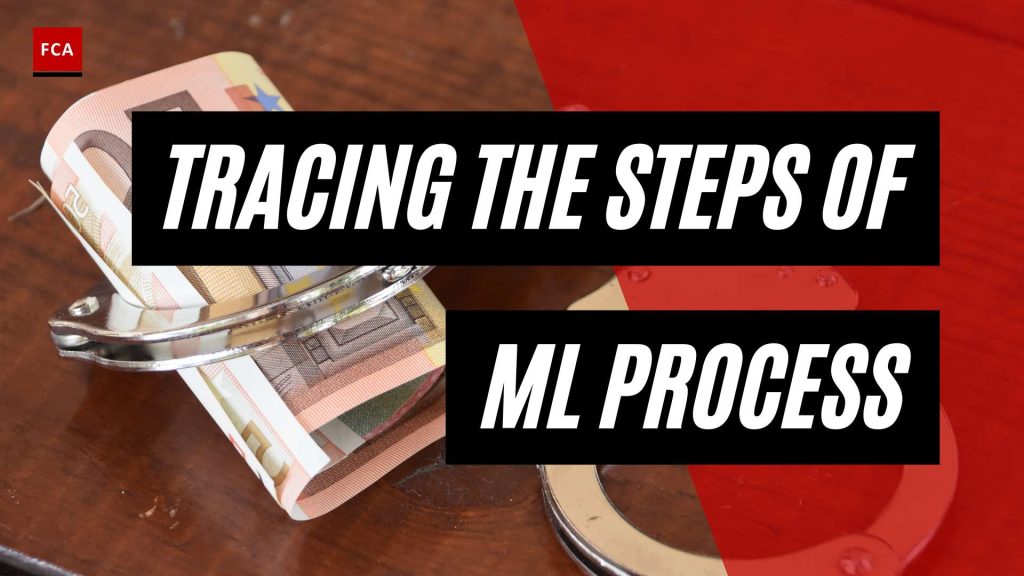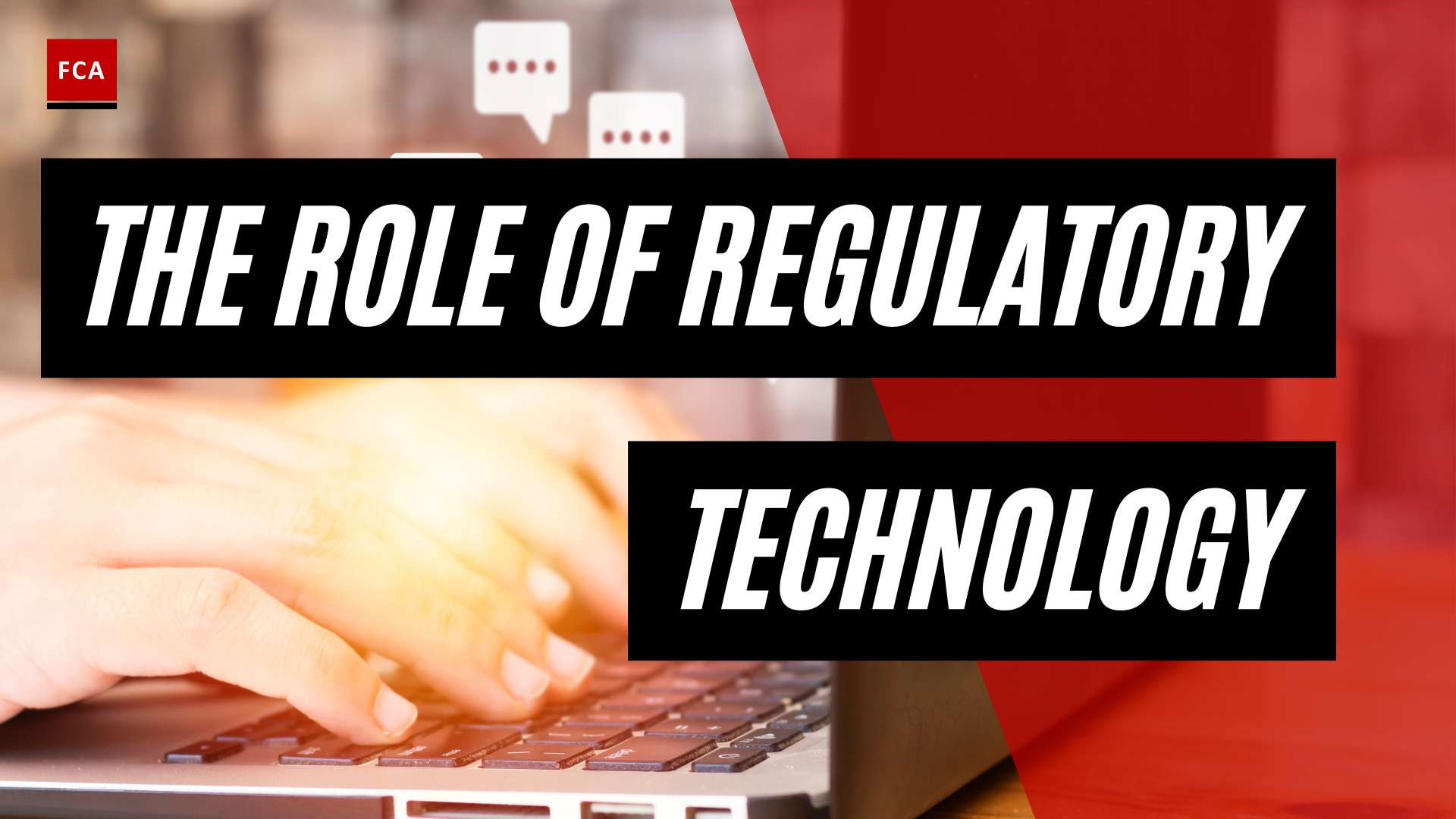Understanding Money Laundering
Money laundering is a serious financial crime that involves concealing the origins of money obtained through illegal activities such as drug trafficking, organized crime, terrorism, and tax evasion. The process of money laundering allows criminals to disguise the illegal origins of their funds and make them appear legitimate. By doing so, they aim to evade detection and the legal consequences associated with their illicit activities.
What is Money Laundering?
Money laundering can be defined as the conversion or transfer of property, knowing that the property is derived from criminal activities, with the purpose of concealing or disguising its illicit origin. This process involves making the funds appear to come from legitimate sources, making it difficult for authorities to trace and identify the proceeds of criminal activity (UNODC). Money laundering schemes can be complex and sophisticated, involving multiple stages and techniques to obfuscate the illicit origin of funds.
Consequences of Money Laundering
The consequences of money laundering and financial crime extend beyond the realm of financial impact. Money laundering undermines the integrity of financial institutions, erodes public trust in the banking system, and poses a threat to economic growth. Criminal organizations that engage in money laundering perpetuate their illegal activities and compromise the security and stability of nations. The social and political consequences are far-reaching, contributing to the erosion of the rule of law and public safety (NCJRS Virtual Library).
Globally, money laundering is estimated to cost 2-5% of the world’s total GDP, which amounts to approximately $2 trillion, according to the United Nations Office on Drugs and Crime (UNODC) (ComplyAdvantage). In the UK alone, money laundering is reported to cost the economy more than £100 billion annually, as reported by the National Crime Agency (LexisNexis).
To combat money laundering effectively, governments, law enforcement agencies, financial institutions, and international organizations must collaborate and develop robust anti-money laundering (AML) measures. These measures aim to prevent criminals from exploiting the financial system to legitimize their illegal proceeds. Implementing comprehensive AML programs and know your customer (KYC) procedures are crucial steps in the fight against money laundering (NCJRS Virtual Library). By establishing international efforts and organizations, countries can work together to develop effective policies and strategies to combat money laundering and financial crime on a global scale.
Understanding the money laundering process is essential for identifying and preventing illicit financial activities. By recognizing the consequences of money laundering and the impact it has on society, individuals and organizations can play a vital role in combating this pervasive financial crime.
The Money Laundering Process
Money laundering is a complex process that involves disguising the origins of illicit funds and making them appear legitimate. It typically consists of three stages: placement, layering, and integration. Each stage plays a crucial role in the money laundering process, allowing criminals to obscure the source of illicit funds and reintroduce them into the legitimate financial system.
The Placement Stage
The first stage of the money laundering process is placement. During this stage, illicit funds are introduced into the financial system. Criminals often use various methods to place their illegal proceeds, including depositing cash into bank accounts, purchasing assets such as real estate or luxury goods, or using money transfer services. The goal is to integrate the illicit funds into the legitimate financial system, making them harder to trace.
To avoid detection, criminals may employ techniques such as structuring or smurfing, which involve dividing large amounts of cash into smaller deposits or transactions to evade reporting thresholds. These techniques make it difficult for authorities to identify suspicious activities and trace the origin of the funds.
The Layering Stage
In the layering stage, the focus shifts to creating complex transactions and multiple layers of financial activity to further obscure the source of the funds. Criminals employ various techniques during this stage, including wire transfers, shell companies, offshore accounts, and complex financial transactions.
Layering helps to distance the illicit funds from their illegal origins through a series of transactions, making it challenging for law enforcement and financial institutions to trace the money trail. By introducing multiple layers of financial activity, criminals aim to create confusion and obfuscate the audit trail, making it difficult to identify the original source of the funds.
The Integration Stage
The integration stage is the final step in the money laundering process. During this stage, the laundered funds are reintroduced into the legitimate economy without raising suspicion. Integration involves merging the illicit funds with legitimate assets or investments, such as businesses, properties, or financial instruments.
Criminals may use various methods to integrate the illicit funds, including purchasing legitimate businesses, investing in stocks or other financial instruments, or acquiring high-value assets. By mingling illicit funds with lawful transactions, criminals make it challenging for authorities to distinguish between legitimate and illicit assets.
The purpose of the integration stage is to legitimize the illicit funds, making them appear as if they originated from legal sources. This allows criminals to enjoy the proceeds of their illegal activities without attracting attention or arousing suspicion.
Understanding the money laundering process is crucial for combating this illegal activity. By implementing robust anti-money laundering (AML) programs and staying vigilant for money laundering red flags, financial institutions and authorities can work together to detect and prevent money laundering schemes, protecting the integrity of the financial system and society as a whole.
Techniques and Methods in Money Laundering
Money laundering techniques are constantly evolving as criminals seek new ways to disguise the origins of illicit funds. Understanding these techniques is crucial for effective anti-money laundering efforts. In this section, we will explore three common methods used in money laundering: smurfing, trade-based money laundering, and money laundering with cryptocurrencies.
Smurfing
Smurfing, also known as structuring or layering, plays a significant role in the placement stage of money laundering. This technique involves using multiple individuals, known as “smurfs,” to exchange illicit funds in smaller, less conspicuous amounts. Smurfs engage in various transactions such as purchasing traveler’s cheques, bank drafts, or making direct deposits into savings accounts. By breaking down larger amounts of illicit funds into smaller transactions, smurfing aims to avoid detection by financial institutions and regulatory authorities.
For example, a network of ten smurfs could “place” $1 million into financial institutions in less than two weeks, thus facilitating the movement of illicit funds without raising suspicion (Money Laundering).
Trade-Based Money Laundering
Trade-Based Money Laundering (TBML) is a method used to move money across borders through international trade transactions. Criminals exploit the complexities of global trade to obscure the origins of illicit funds. TBML involves manipulating invoices, over or under-invoicing goods, or misrepresenting the quantity or quality of goods in order to integrate illicit funds into the legitimate economy.
In the infamous HSBC money laundering scandal, Colombian drug traffickers leveraged TBML techniques. They used export transactions to move illicit funds to Colombia, where the goods were resold. The funds were then integrated back into the financial system through Colombian banks, successfully laundering money in the process (Sanctions.io).
Money Laundering with Cryptocurrencies
As the use of cryptocurrencies continues to grow, criminals have turned to these digital assets as a means of laundering money. Cryptocurrencies offer a level of anonymity and ease of transfer that can make it challenging to trace illicit funds. Criminals employ various methods to launder money using cryptocurrencies, such as crypto mixing, privacy coins, and chain-hopping.
Crypto mixing involves combining multiple transactions from different sources to obscure the original source of funds. Privacy coins, which offer enhanced privacy features, make it more difficult to trace transactions. Chain-hopping refers to transferring funds between different cryptocurrencies or blockchain networks to create dead-ends in the money trail.
In 2022, an estimated $23.8 billion in digital currency was transferred through illicit addresses, signaling a significant rise in crypto money laundering. Criminals continue to innovate and adapt their methods to exploit the vulnerabilities of cryptocurrencies in the money laundering process (Sanctions.io).
Understanding these money laundering techniques is crucial for financial institutions, law enforcement agencies, and regulatory authorities in their efforts to combat money laundering and terrorist financing. By staying informed and vigilant, stakeholders can work together to develop effective strategies and technologies to detect and prevent illicit financial activities.
Combating Money Laundering
To combat the illicit activities of money laundering, a comprehensive and coordinated effort is required from various stakeholders, including governments, law enforcement agencies, financial institutions, and international organizations. This section explores two crucial aspects of combating money laundering: Anti-Money Laundering (AML) programs and international efforts and organizations.
Anti-Money Laundering (AML) Programs
Financial institutions play a pivotal role in the fight against money laundering, as they are often the primary mechanism used by criminals to legitimize their illegal proceeds. To prevent money laundering activities, financial institutions are required to implement robust Anti-Money Laundering (AML) programs (Investopedia). These programs are designed to identify, assess, and mitigate the risks associated with money laundering and terrorist financing.
AML programs involve several key components, including:
-
Risk Assessment: Financial institutions conduct regular risk assessments to identify and evaluate the money laundering risks they face. This enables them to develop appropriate measures to mitigate these risks.
-
Customer Due Diligence (CDD): A crucial aspect of AML programs is implementing Know Your Customer (KYC) procedures. Financial institutions are required to verify the identity of their customers, assess their risk profiles, and monitor their transactions to detect any suspicious activities.
-
Transaction Monitoring: Financial institutions employ sophisticated monitoring systems to detect and report unusual or suspicious transactions. By monitoring patterns of activity, including transaction amounts, frequency, and sources of funds, they can identify potential money laundering activities.
-
Reporting Suspicious Activities: AML programs require financial institutions to report suspicious activities to the appropriate authorities. This allows law enforcement agencies to investigate and take necessary action to combat money laundering.
By implementing effective AML programs, financial institutions can help prevent and detect money laundering activities, protect their reputation, and comply with the relevant anti-money laundering regulations.
International Efforts and Organizations
The fight against money laundering is a global effort that requires collaboration and cooperation between countries and international organizations. Various international organizations work to combat money laundering through the development of guidelines, regulations, and best practices.
One such organization is the Financial Action Task Force (FATF), an intergovernmental body that sets international standards and promotes the implementation of legal, regulatory, and operational measures to combat money laundering and terrorist financing. The FATF’s recommendations provide a framework for countries to develop and enhance their AML and counter-terrorist financing regimes. Additionally, the FATF conducts mutual evaluations of member countries to ensure compliance with these standards.
Other international organizations, such as the United Nations Office on Drugs and Crime (UNODC) and the World Bank, also contribute to the global fight against money laundering. These organizations provide guidance, technical assistance, and capacity-building programs to help countries strengthen their AML frameworks and enhance international cooperation.
By collaborating with international organizations and adhering to their guidelines, countries can effectively combat money laundering on a global scale and ensure the integrity of the international financial system.
In conclusion, combating money laundering requires a multi-faceted approach involving the implementation of strong AML programs by financial institutions and international cooperation through organizations like the FATF. By working together, we can mitigate the risks posed by money laundering, protect the financial system, and contribute to the global fight against financial crime.
Legal Consequences of Money Laundering
Engaging in money laundering can lead to severe legal repercussions due to the illicit nature of the activity. Governments and regulatory bodies worldwide are actively working to combat money laundering by implementing stricter regulations and enforcement mechanisms. In this section, we will explore two primary legal consequences of money laundering: penalties and fines, and asset confiscation.
Penalties and Fines
The penalties for money laundering can be severe, ranging from hefty fines to imprisonment. Governments and legal systems recognize the seriousness of money laundering and aim to deter individuals from engaging in such activities. The exact penalties and fines vary across jurisdictions and depend on the scale and nature of the money laundering offense.
Imprisonment terms for money laundering convictions can range from several years to decades, depending on the severity of the crime. In addition to imprisonment, individuals involved in money laundering may face substantial fines. These fines often represent a percentage of the laundered funds or a fixed monetary amount set by the legal system.
It is important to note that money laundering laws and penalties differ from country to country. Therefore, it is essential to familiarize oneself with the specific anti-money laundering regulations and legislation in the jurisdiction where one operates.
Asset Confiscation
Another significant legal consequence of money laundering is asset confiscation. Governments have the authority to seize assets that are determined to be proceeds of money laundering or linked to criminal activities. The purpose of asset confiscation is to disrupt and dismantle criminal networks by removing the financial gains acquired through illegal means.
Asset confiscation can take various forms, including freezing and seizing bank accounts, real estate properties, vehicles, and other valuable assets acquired through money laundering. Confiscated assets are often sold or auctioned, with the proceeds directed toward law enforcement efforts or used to compensate victims of crime.
It is worth noting that asset confiscation laws and procedures differ among jurisdictions. Some countries have specific legislation in place to facilitate the confiscation of assets derived from money laundering, while others may rely on general asset forfeiture laws.
By imposing penalties and fines, as well as confiscating assets, legal systems aim to deter individuals from participating in money laundering activities. These legal consequences play a crucial role in discouraging money laundering and preserving the integrity of financial systems.
To effectively combat money laundering and adhere to anti-money laundering regulations, financial institutions are required to implement robust know your customer (KYC) procedures and anti-money laundering (AML) programs. These measures help ensure compliance, reduce the risk of money laundering, and protect the integrity of the global financial system.
It is essential to stay informed about the specific money laundering laws and regulations in your jurisdiction to mitigate the legal risks associated with engaging in such activities.
The Social and Economic Impact of Money Laundering
Money laundering not only poses a significant threat to the integrity of financial systems but also has far-reaching social and economic consequences. It undermines financial institutions and poses a threat to economic growth.
Undermining Financial Institutions
One of the major social impacts of money laundering is its ability to undermine the integrity of financial institutions. By allowing illicit funds to flow through legitimate channels, money laundering erodes public trust in the banking system. Criminal organizations exploit vulnerabilities in financial systems to disguise the illicit origins of their funds, making it difficult for authorities to trace and prevent the flow of illegal money.
This erosion of trust in financial institutions can have detrimental effects on society as a whole. When individuals lose faith in the integrity of banks and other financial intermediaries, it becomes harder to attract investments, facilitate economic transactions, and maintain a stable economy.
Threat to Economic Growth
Money laundering poses a significant threat to economic growth. According to the United Nations Office on Drugs and Crime (UNODC), money laundering globally is estimated to cost 2-5% of the world’s total GDP, amounting to approximately $2 trillion (ComplyAdvantage). The impact of this illicit activity is staggering.
Money laundering distorts markets, disrupts fair competition, and hinders economic development. It creates an environment conducive to corruption and organized crime, which further perpetuates societal problems. The diversion of illicit funds into legitimate sectors can skew market dynamics, making it difficult for honest businesses to thrive.
In the United Kingdom alone, money laundering costs the economy over £100 billion annually, as reported by the National Crime Agency (LexisNexis). This staggering amount of money diverted from productive activities hampers economic growth and puts additional strain on public resources.
The social and economic impact of money laundering is significant and pervasive. It erodes the integrity of financial institutions, undermines public trust, and poses a threat to economic stability and growth. To mitigate these consequences, robust anti-money laundering (AML) measures and international cooperation are essential. By combating money laundering effectively, societies can protect their financial systems and promote a more secure and prosperous future.
The Role of Financial Institutions
Financial institutions play a crucial role in the money laundering process, as they are often the primary mechanism used by criminals to legitimize their illegal proceeds. To combat money laundering effectively, it is essential for financial institutions to implement robust anti-money laundering (AML) measures and have a thorough understanding of their customers through Know Your Customer (KYC) procedures.
Importance of AML Measures
Financial institutions are required to implement Anti-Money Laundering (AML) programs to prevent money laundering activities. These programs are essential for businesses to prevent financial crimes, protect their reputation, and avoid legal repercussions (IDcentral). AML measures involve a combination of risk assessments, customer due diligence, monitoring transactions, and reporting suspicious activities to authorities.
By implementing AML measures, financial institutions can detect and report suspicious transactions, identify potential money laundering red flags, and mitigate the risk of being unwittingly involved in money laundering schemes. These measures help maintain the integrity of the financial system and safeguard against illicit activities.
Know Your Customer (KYC) Procedures
Know Your Customer (KYC) procedures are an integral part of AML programs implemented by financial institutions. KYC procedures involve verifying the identity of customers, understanding the nature of their transactions, and assessing the potential risks associated with them.
Financial institutions should establish robust KYC processes, which include obtaining customer identification documents, conducting identity verification checks, and assessing the source of customers’ funds. KYC procedures enable financial institutions to establish a comprehensive understanding of their customers and identify any suspicious or unusual activities that may indicate potential money laundering or terrorist financing activities.
By adhering to strict KYC procedures, financial institutions can better assess the risk profile of their customers, make informed decisions, and detect any potential involvement in illicit financial activities. This helps in preventing the misuse of their services for money laundering purposes and ensures compliance with anti-money laundering regulations and money laundering laws.
Financial institutions play a critical role in the fight against money laundering. By implementing robust AML measures and conducting thorough KYC procedures, they contribute to the overall efforts to combat money laundering and protect the integrity of the financial system. It is imperative for financial institutions to stay vigilant, keep up with evolving money laundering techniques, and continuously enhance their AML programs to effectively prevent and detect any illicit financial activities.
Emerging Trends in Money Laundering
As technology continues to advance, so do the techniques and challenges associated with money laundering. In this section, we will explore two emerging trends in money laundering: money laundering with digital currencies and the evolving techniques and challenges faced by authorities in combating this illicit activity.
Money Laundering with Digital Currencies
With the rise of digital currencies, such as Bitcoin and Ethereum, criminals have found new avenues for money laundering. The anonymous and decentralized nature of these cryptocurrencies presents challenges for law enforcement agencies and regulatory bodies. In 2022 alone, an estimated $23.8 billion in digital currency was transferred through illicit addresses, indicating a significant rise in crypto money laundering (Sanctions.io).
Criminals exploit the pseudonymous nature of digital currencies to obscure the origin and destination of funds. They employ various methods, including crypto mixing, privacy coins, and chain-hopping, to create dead-ends in the money trail. These techniques make it difficult for authorities to trace and identify the individuals involved in illicit financial transactions.
To address the challenges posed by money laundering with digital currencies, regulatory bodies and financial institutions are implementing enhanced due diligence measures. They are working to improve their understanding of the blockchain technology underlying digital currencies and developing tools to monitor and detect suspicious activities. Additionally, governments around the world are enacting regulations to bring digital currency platforms and exchanges under the purview of anti-money laundering (AML) laws.
Evolving Techniques and Challenges
Money laundering techniques continue to evolve as criminals adapt to advancements in technology and regulatory measures. This constant evolution poses significant challenges for authorities striving to combat money laundering effectively.
One of the evolving techniques seen in money laundering is the use of emerging payment methods, such as mobile payments and online wallets. Criminals exploit these platforms to move illicit funds quickly and discreetly across borders. Authorities face the challenge of keeping pace with these new payment methods and developing effective monitoring mechanisms.
Another challenge is the increasing globalization of financial transactions. Money laundering schemes often involve multiple jurisdictions, making coordination between international law enforcement agencies crucial. The sharing of information and cooperation between countries are vital in detecting and preventing cross-border money laundering activities. International organizations, such as the Financial Action Task Force (FATF), play a pivotal role in promoting collaboration and setting global standards for combating money laundering.
As criminals continually adapt their techniques, authorities must remain vigilant and proactive in developing countermeasures. This includes investing in advanced technologies, leveraging data analytics, and fostering collaboration between public and private sectors. By staying ahead of evolving trends, authorities can effectively disrupt money laundering networks and protect the integrity of the global financial system.
The emergence of money laundering with digital currencies and the evolving techniques employed by criminals highlight the need for ongoing efforts to strengthen anti-money laundering (AML) programs and regulatory frameworks. By staying informed about the latest trends and challenges in money laundering, professionals working in compliance, risk management, and anti-financial crime can play a crucial role in protecting the integrity of the financial system and preventing illicit activities from flourishing.








